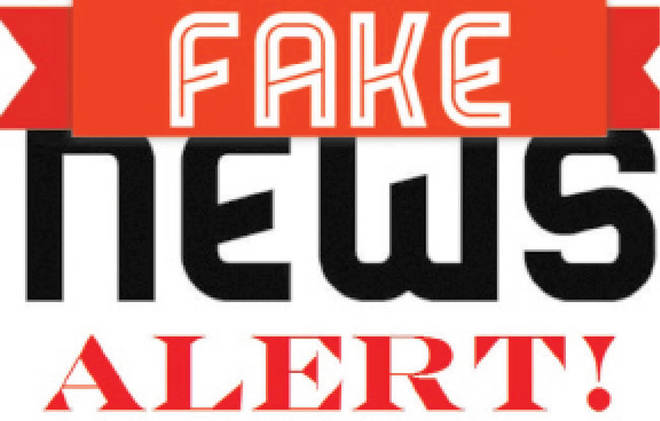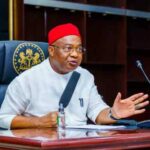
It is nothing new. News has always been a commodity vulnerable to manipulation in various guises: forgeries, manufactured facts strange to real facts, outright and cooked up falsehood dressed up as truth, etc. In the 20th century yellow journalism was the curse of the news media. In the eighties we had a virulent new form of yellow journalism in Nigeria. We called it junk journalism.
Now, enter fake news.
If we thought that the modern information gathering and disseminating system in this age of the greatest enlightenment in human history had rid the world of yellow and junk journalism, I am sorry to say we were wrong. The challenges of keeping journalism safe from the various viruses, including the professional equivalent of AIDS, remain with us, making the job of editors and reporters much harder, not simpler. I offer my commiserations.
The American presidential election of 2016 threw up this unsettling fact. It opened the eyes of all professional journalists and, indeed, the general public, to the ultimate form of vicious information manipulation that ill serves both the journalism profession and the public.
Fake news is not just bad journalism, if journalism it is, it is also the worst weapon in the hands of those who think less of the good of the society but more of their political, social interests. It is, of course, the continuation of the war between good and evil. The war never ends.
Wikipedia, the on-line encyclopaedia, defines fake news as “a type of yellow journalism or propaganda that consists of deliberate misinformation or hoaxes spread via traditional print and broadcast news media or on online social media.” It goes on to underline this important fact, to wit, “Fake news is written and published with the intent to mislead in order to damage an agency, entity, or person, and/or gain financially or politically, often with sensationalist, exaggerated or patently false headlines that grab attention.”
I think we are fairly familiar with this. Fake news flourished in this country post the annulment of the June 12, 1993 presidential election. A stiff opposition arose to the military decision. Various groups, the most notable of which was NADECO, sprang up in the country to fight for the de-annulment of the election. Much of the struggle was fought on the pages of newspapers and magazines. The war was vicious. And like in all wars, truth bled from constant bludgeoning. It turned the colour of our journalism lurid. All being fair in war as in love, the opposition groups indulged in what we regarded then as manufactured news to paint both the Babangida and the Abacha administrations in unsightly colours. Pieces of information stretched credulity. But they were intended to serve a purpose. That mattered more than telling the truth.
Fake news is actually an improved form of yellow journalism with a less colourful name. Yellow journalism at its height, was seen by the mainstream media and much of the society in the Western world as an irritating indulgence by men whose capacity for harm was moderated by their inability to really influence political, social and economic decisions where they mattered. Individuals and institutions were brought to ridicule but yellow journalism was fun read too. That made its sting less painful for those stung by it. But it was bad journalism all the same and its purveyors had no qualms dragging it into the mud.
Fake news, on the other hand, is meant to hurt and it hurts. It is meant to destroy and it destroys. All nations have woken up to the dangers of fake news and are responding to it with legislations intended to cripple it. Its role in the 2016 American presidential election is still being debated. But many people no longer doubt that fake news made it possible for Donald Trump, the man whose democratic rival in the presidential election, Mrs Hillary Clinton, described as the “least qualified and the least prepared to be president” of God’s own country, to win. It shows the reach and the capacity of fake news. It shows its evil too. It shows that if the American electorate could so easily and so comprehensively be influenced by fake news, no country in the world is safe. And that is worrisome.
Fake news worries every country today, not least because Russia clearly is the chief faker of fake news. President Putin is fighting the cold war by another means. He is undermining Western democracy. I am sure Western leaders are still scratching their heads, wondering how this former KGB boss perfected his art, making them all look stupid. If fake news could influence the American voters that many of us regard as among the most sophisticated and the most politically aware in the world, spare a thought for what fake news could do and is probably doing to elections in third world countries. The danger is frightfully present and bone-chilling.
I draw attention to fake news for one good reason. 2017 is about to slide off our radar; 2018 looms in the near horizon. Indeed, by the time you are reading this, 2017 would have virtually run its allotted time. The significance of that is that the new year is the year the 2019 general elections actually begin. The editors and the reporters of the Daily Trust titles need to prepare for the possible avalanche of fake news in the electoral process. Information will be manufactured and given out as facts. And because of the ambition of editors and reporters to scoop other editors and reporters, they fall for the exclusive without knowing the news is fake.
Fake news comes from all sorts of places and organisations. The social media and on-line newspapers and magazines are the richest sources of fake news. They peddle fake news because it attracts healthy advertisement revenue for the publishers, hence the sensational headlines that are not often related to the stories they purport to tell. Fake news gets by through deceit because it is a sophisticated form of propaganda.
How do you identify fake news? Mainstream journalists and other information professionals are working hard to help editors and reporters identify fake news and prevent it from getting into their publications. It is no mean task given the variety of the sources of fake news. What would save a news medium from being used as a purveyor of fake news is a strict regime of fact checking by editors and reporters. The seven types of fake news identified by Claire Wardle of First Draft News are intended to help readers, not editors and reporters. When you pass off fake news as authentic news, do not ignore the fact that the eyes of big brothers and big sisters are keenly watching to see if your story falls into one or more of these identifiers offered by Wardle:
1. Satire or parody (“no intention to cause harm but has potential to fool).
2. False connection (“when headlines, visuals or captions don’t support the content).
3. Misleading content (“misleading use of information to frame an issue or an individual).
4. False content (“when genuine content is shared with false contextual information”).
5. Impostor content (“when genuine sources are impersonated” with false, made-up sources).
6. Manipulated content (“when genuine information or imagery is manipulated to deceive,” as with a ‘doctored’ photo).
7. Fabricated content (“new content is 100 per cent false, designed to deceive and do harm”).

 Join Daily Trust WhatsApp Community For Quick Access To News and Happenings Around You.
Join Daily Trust WhatsApp Community For Quick Access To News and Happenings Around You.


